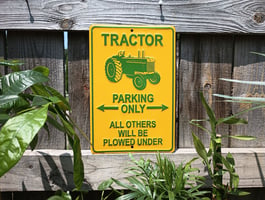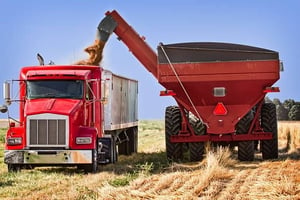Slippery Slope Fallacy: We'll Be Plowing The Rockies Soon
Land is not all the same. Some is flat, some has gentle slopes, some land is hilly or mountainous. Since land varies greatly in quality, we should not treat it all the same. Just because we can plow up 300 acres in northern Iowa does not mean we can plow 300 acres in Boone county, Arkansas. On a smaller scale, just because we can plow the bottomland does not mean we can plow the hills. We have to know the boundaries and limitations of our specific land before we try to farm it.
Very likely, a given piece of land will have differences in grade, soil quality, and forage capabilities. Maybe not out in the flatlands, but here in the Ozarks, we have huge differences. Down by the creek, the soil is deep (deeper), loamy, and generally more suitable for tillage than on a hill. A gentle south facing slope makes for a great pasture, but tends to dry out quickly in a drought. A north facing slope holds water long after a rain and tends to be muddy, leading to grass damage if grazed at the wrong time. My grandfather lived in Oklahoma. On his side of the Arkansas river, it was deep sandy loam, flat, and perfect for plowing. But just on the other side was a sheer cliff on the side of a mountain. There was a huge variation in farmability. To utilize all our land wisely, we use what are called keylines.
A keyline is where a topographical distinction separates two plots of land. You will see them where bottomland and hill meet, at the crest of the hill where two slopes come together, and pretty much anywhere water flows. A valley or gully is a keyline.

If we farmers paid more attention to keylines, I believe that we would not have so many erosion, pugging (grass damage due to grazing in mud), and drought problems. Some areas are just not capable of handling some things.
Let's not force our land to do what it can't. God gave it to us so we can take care of it. Many large scale farmers have one goal: to get the most out of the land. Well, it just happens that if you don't force it to do what it can't, you can get the most out of the land. Plowing a slope with a 12/12 pitch won't get the most out of the land.
Here's how I look at it: steep slopes should generally remain in forest. Moderate slopes can make for good pasture. Install fences between a northerly and southerly sloping hillside. Flat bottomland makes a good plowed garden plot, or just more pasture. Fruit trees grow best on a northerly slope, where the air movement can raise the temperature a few degrees, but the sun won't make the trees bud out early. Look at your land before starting anything, and be sure the land can handle it.




